Types of TVs and their difference
Types of modern TVs and their type classification according to certain characteristics are quite diverse. Therefore, when deciding on the purchase of new television equipment, many consumers face difficulties in choosing. After all, this is a complex device that is acquired for a long time, so it must have a high degree of reliability. Choosing this type of device, I want to, in a few years, have the actual set of necessary functions and high technical equipment. To choose the right model for yourself with the necessary parameters and optimal functionality, it is important to understand the difference between the types of TVs.
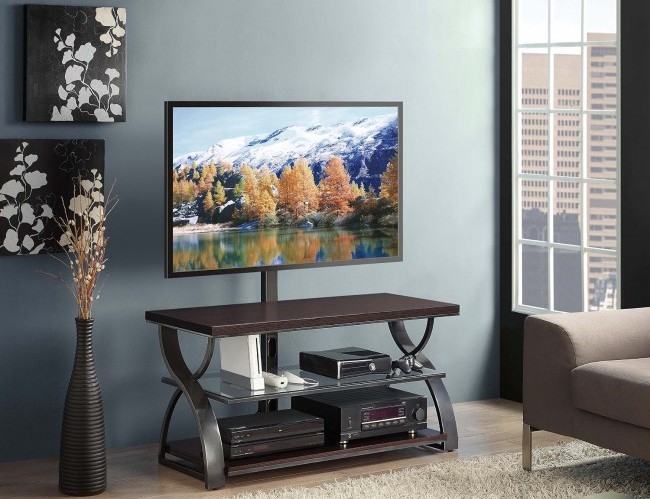
Content
What are the parameters classified televisions
There is no generally accepted classification of these devices. Most often, experts divide TVs by:
- technologies with which the image is built on the screen;
- functional features of the device;
- opportunities screen resolution.
TV Imaging Technologies
This group of televisions is divided into five types:
- CRT;
- projection;
- plasma;
- liquid crystal;
- thin OLED.
Kinesk tvs
Although today it is unlikely that such devices can be found in stores, but in many homes they still function. CRT technology was widely used in the 90s - 2000s. The advantages of kinescopic equipment include:
- budget price (compared to modern devices);
- the possibility of repair;
- wide viewing angle;
- natural colors;
- long service life.
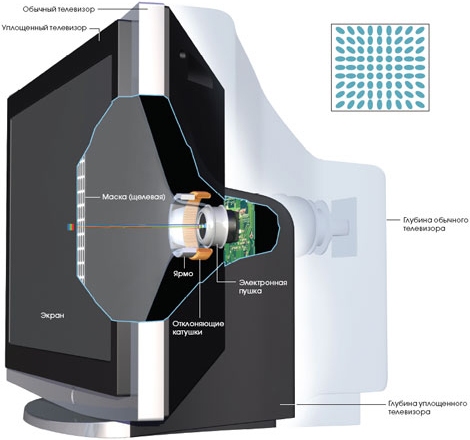
Disadvantages of cathode ray tube televisions:
- inability to broadcast digital broadcasting (many models do not even provide set-top box);
- large size and weight;
- image distortion;
- consume more electricity, compared with modern models;
- limited functionality.
The technology of kinescopic TVs studied and developed to the limit.
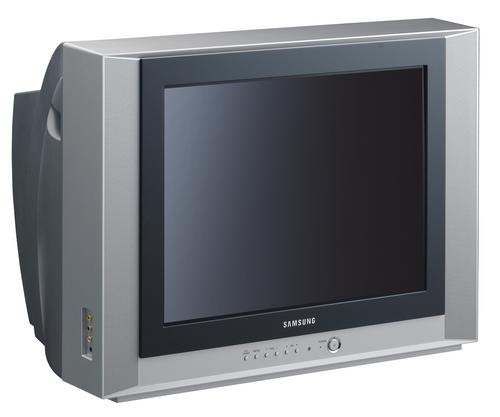
Projection tvs
They are based on an optical system that projects a small image onto the main screen (RPTV). There are two types:
- based on cathode ray tubes;
- based on liquid crystals.
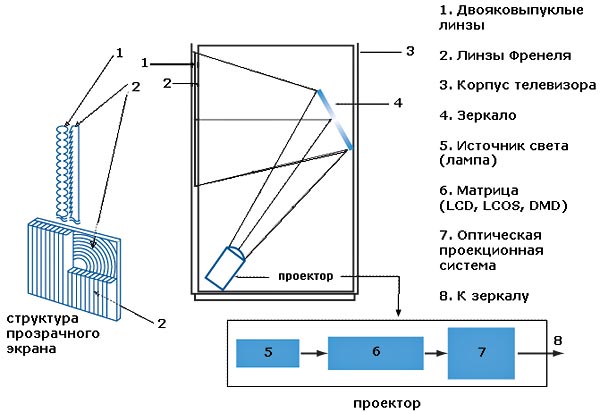
The first type of projection TV has three small kinescope (lamps). Each has its own color: red, green and blue. Before projecting the image to the big screen, their rays pass through a complex system of lenses, prisms, and mirrors. This type of TV is very similar to CRT, only it has a larger diagonal (up to 80 inches), better image quality and lower power consumption.
Projection TVs that are based on liquid crystals, have either one three-color matrix, or three (corresponding to the colors of the lamps). These types of TVs weigh much less, have a high resolution, improved picture. In the process, such equipment is very hot, so most models have a fan to protect against overheating.Read more about the device, the pros and cons of such TVs, read the article about projection technologies.
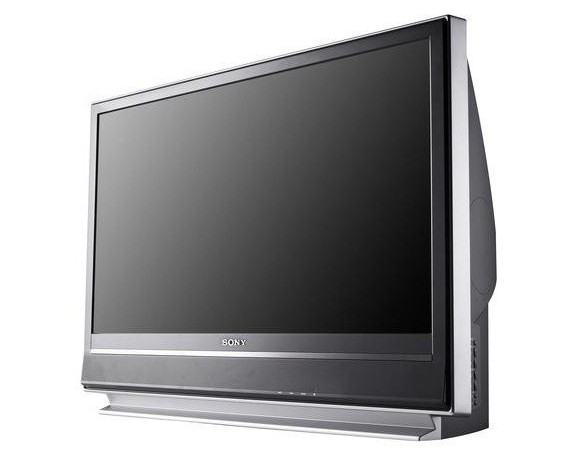
Plasma Technology (PDP)
These thin panels with a perfectly flat screen and excellent image quality (bright and rich colors) are significantly different in appearance from the previous types. The source of the formation of images is a large number small pixel cells. In such equipment there are no problems with focusing, TVs have a wide viewing angle without loss of quality. But in PDP TVs of a small diagonal (less than 42 inches), it is quite problematic to apply the resolution of today Full HD. We are not talking about innovative 4K and 8K. Moreover, even the smallest plasma panel spends more electricitythan the old kinescopic "box". Everything else, the cost of PDP - equipment is quite high. And at the moment this technology is not able to compete with relatively inexpensive LED screens. Production often suffers losses, although the image quality of the plasma greatly benefits LCD panels in viewing angles, color flow and matrix response.Despite this, plasma technology has ceased to develop by many leading manufacturers.

LCD TVs
This is the most sought after consumer group. The operation of the liquid crystal devices is based on polarized light flux. The source of luminescence here, unlike plasma TVs, is ordinary fluorescent lamps, or, as in new models, LEDs. They illuminate a white sheet of reflective screen behind a glass plate. Liquid crystals are applied on it, which form an image under the influence of an electric current.
Representatives of this group are different energy efficient and low weight, you can easily mount on the wall with help bracket. In addition, compared with plasma, LCD equipment maintainableThis characterizes them as practical devices.
![]()
The disadvantages of budget models include the delay in dynamic frames and the limited viewing angle.
The most popular among the liquid crystal TVs - LED. LEDs serve as the backlight of the matrix. At this stage, the manufacturers use two types of illumination: Direct and Edge. In the first case, the LEDs are set behind the matrix. This allows you to achieve a low black level, so you can use the technology Local Dimming (local dimming the screen) and avoid side lights. In the second (Edge) light sources are located along the screen (can be located on one side, on two or four - depending on the size of the diagonal). Such models are energy efficient and more affordable for consumers.
In addition to the above-mentioned advantages of such televisions, the strengths of LED screens include:
- a wide range of products and the choice of manufacturers;
- any diagonal solutions available today;
- the absence of visible flickering and focusing defects of the rays;
- there are no problems with image geometry and clarity;
- Great for broadcasting not only analog channels, but also modern digital television.
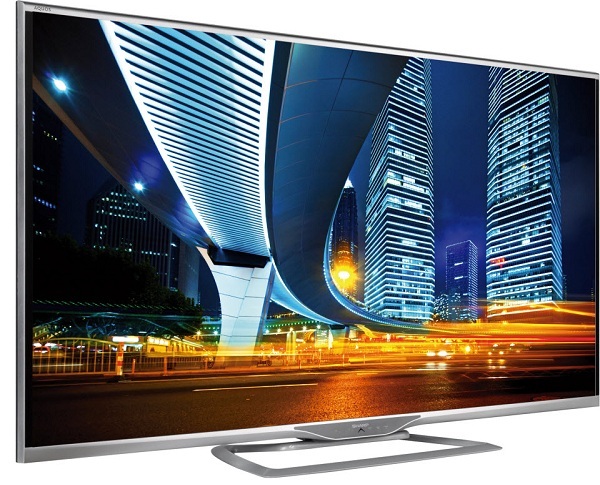
OLED TVs
It is based on a matrix with organic LEDs. The picture is displayed using self-emitting diodes - no backlighting is required, as in LCD technology - this is the main thing the difference between OLED and LED. Multi-colored semiconductor devices act as independent light sources. OLED The technology allows to create the thinnest screens to date (several millimeters), including curved shape.
Such devices are many times superior to their predecessors. Organic LEDs allow you to get the highest possible level of image brightness, contrast, color reproduction. Practically unlimited viewing anglewhich is not at all inferior to plasma technology. In addition, they are much lighter, thinner and more energy efficient than plasma devices. The LCD-models of OLED technology wins in the smooth transmission of dynamic scenes, the lack of constant backlight.
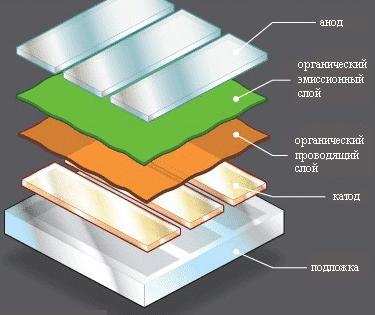
Currently, the release of such TV models are engaged in two leading manufacturers: Samsung and LG. They have already released and presented several serial samples, the price of which far exceeds similar LCD and plasma TVs. Also, as a disadvantage of such models, it can be noted, as in plasma, the degradation and burnout of pixels over time, which leads to residual images.
At the moment, OLED devices have a short service life - about 10 thousand hours, while the LCD has about 60 thousand, and the plasma has up to 100 thousand hours of operation.
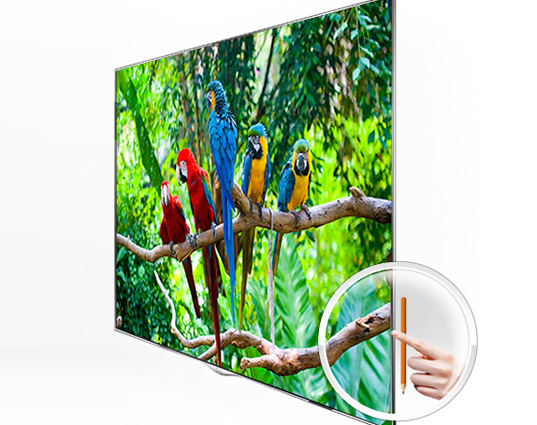
Screen resolution
Specialists divide TV screen resolution into three large groups:
- SD;
- HD;
- Ultra HD.
For old CRT TVs, only standard definition TV is available - SD. Since the majority of TV channels are still broadcast in this mode, models with a resolution of 720 × 576 pixels, 720 × 480 pixels are relevant and used by a large number of users.
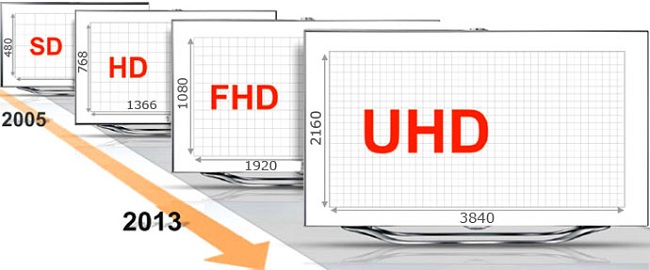
For such a TV, access to paid channels in high quality is possible with the help of smart cards. It is issued by the provider to connect either directly to the TV, through CAM moduleor via a TV set-top box.
A new generation of televisions - LED, OLED and plasma - support television high and ultra high definition. The most current format is HDTV (from 1280 × 720 pixels to 1920 × 1080 pixels). It is available on digital television.
For some models of OLED devices, the best is available to date. 4K resolution (3840 × 2160 pixels); 8K (7680 × 4320 pixels) - Ultra HD.
It is worth noting that the future for HDTV. But currently, only some TV channels are broadcast in this format. Cable operators and satellite service providers are constantly expanding the list of channels transmitted in high resolution.

Toshiba TV 4K TV
If we talk about innovative formats 4K (8K), the owners of the equipment with their support for a long time will have to watch the video content of this resolution only through a Blu-ray player. But this screen is perfect for video games. A short distance to the panel will not affect the image quality, and a high frame rate and excellent picture will allow gamers to get the most out of the game.
Device functionality
Modern models can be divided into four groups with the ability to:
- Smart tv;
- 3D;
- universal models;
- no extra features.
Equipment with the support Smart-technologies have Internet access. Thanks to this, you can easily access social networks, use the built-in browser and web services supported by the device from the TV screen using a remote control or a wireless keyboard.
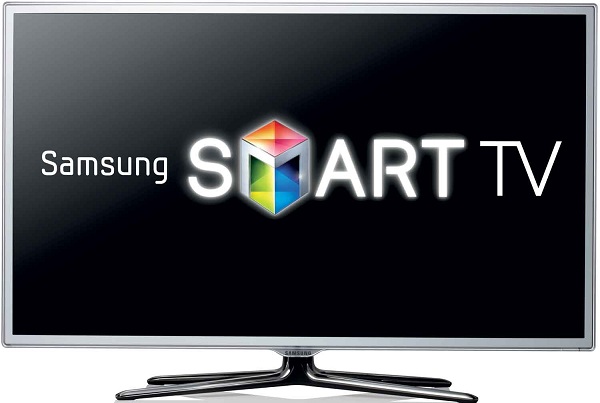
Smart-enabled
3D models can differ between themselves technology: active and passive. In the first case, the transfer of the image is done alternately on each eye (this is available thanks to glasses with a power source). Due to this, the viewer sees the image in the resolution in which it is transmitted, with a minimum level of distortion.With a passive 3D picture is transmitted from different angles at once to both eyes of the viewer. Such technology, as well as accessories for its use, is much cheaper. But the image quality and resolution is inferior to active 3D.
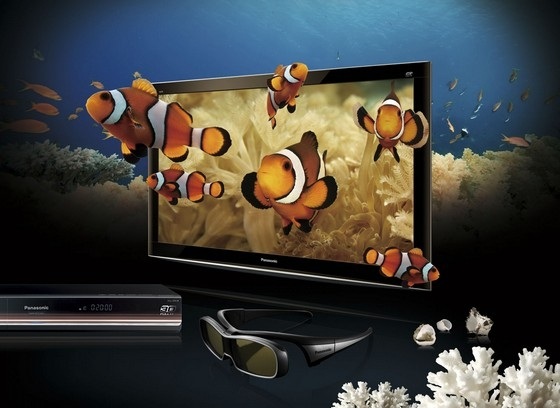
3D model
In the universal models are available, and those, and other technologies.
Having considered several classifications of televisions, we can conclude that the most popular today are LED-model. They have access to high resolution transmission of video content, which is now actively developing, and the necessary functions relevant to modern devices. Such devices are rich not only in a wide model range, but also in a price category. The technology of plasma TVs, in view of expensive production, gradually subsides. They are replaced by OLEDs, which contain all the latest achievements of developers and manufacturers of television equipment.

/rating_off.png)












